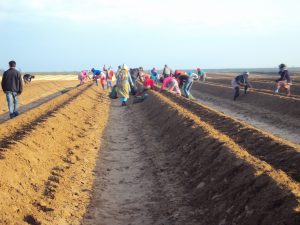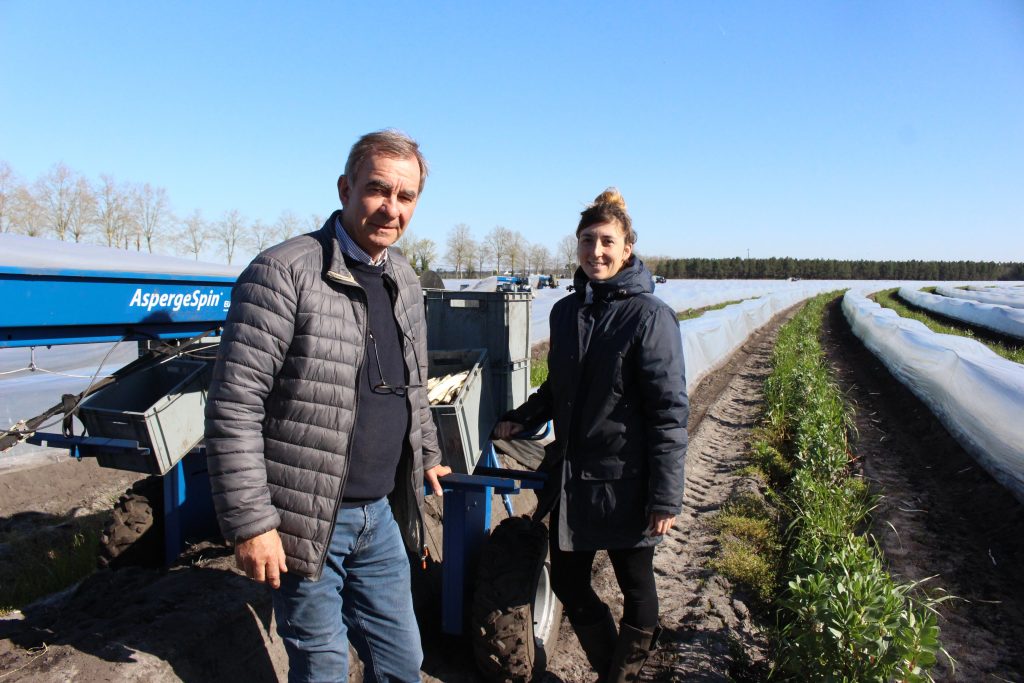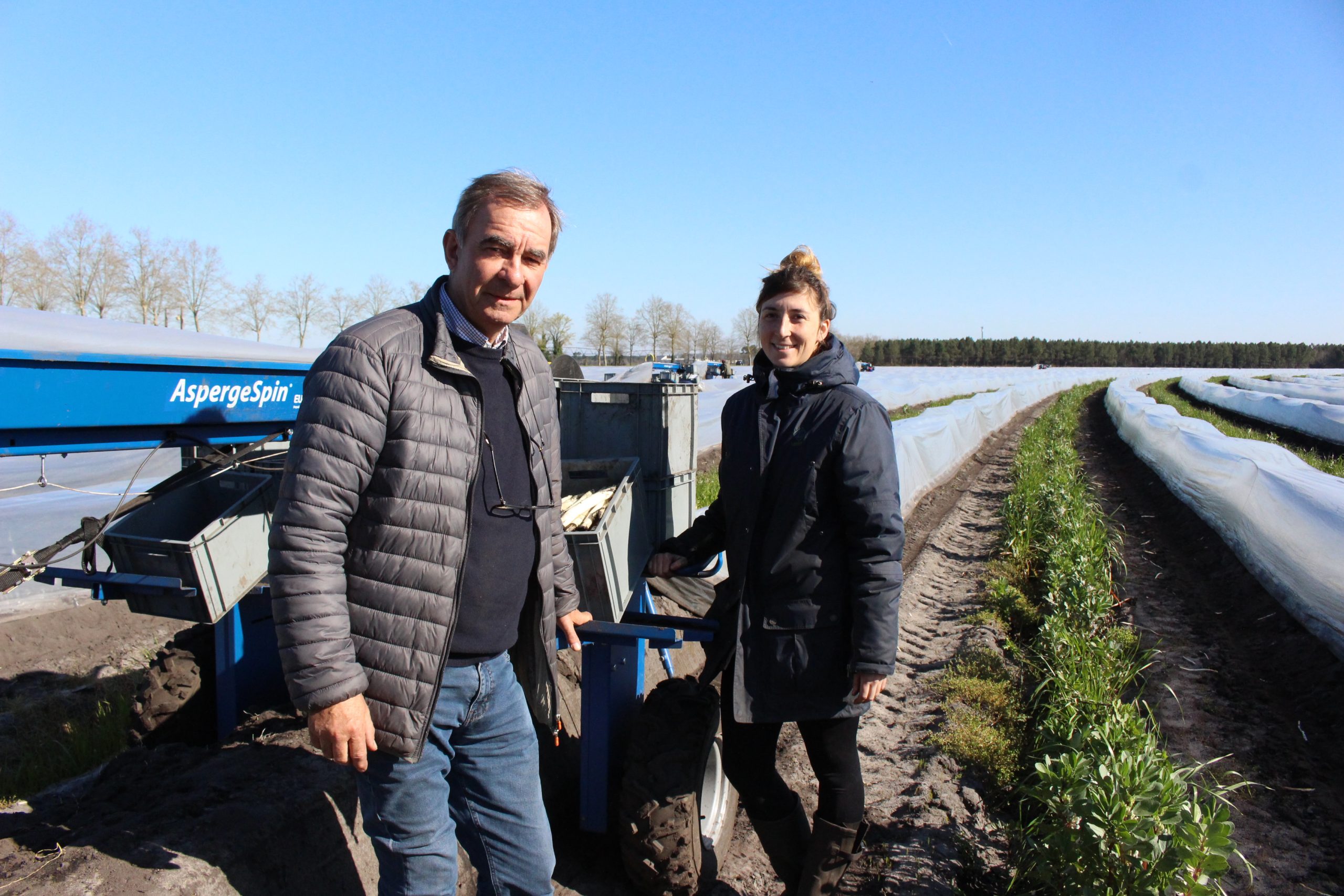An “out-of-the-ordinary” bed height
The Lebourg family is based in Cestas in the south-west of France, where it runs an 800 ha farm on which asparagus is a diversification crop, with 35 hectares planted in 2017 and 2018. Here, ridge cropping is justified because the layer of “alios”, which limits the depth and drainage of the soil, is very close to the surface (40 or 50 cm deep). In 2018, the Lebourg family embarked on an “out-of-the-ordinary” project to make 70 cm beds in a semi-circle to follow the path of the watering pivot. The large gap between rows (more than 3.50 m) allows a large volume of earth to be brought into the bed. “And instead of planting 20 cm below the surface, we planted 20 cm above,” explains Philippe Lebourg.
Modify and raise all equipment
“Large beds allow for more regular production because they reduce temperature contrasts. The first spring harvests have been slightly delayed, but volumes are rapidly becoming more stable,” said Philippe Lebourg. In addition, the beds are covered with a double mulch: thermal mulch and tarpaulin. The planting was done in double rows at 30,000 crowns/ha, or 11 crowns per linear metre, mostly with Darzilla (70%), then Vitalim, Terralim, Cygnus and Prius. The biggest adaptation was to the hardware. “With beds 70 cm high, we had to modify and raise all of the equipment, from tractors to harvest assistance machines,” said Lebourg. The move to a large gap has reduced the costs of setting up the crop as well as harvesting costs. In fact, going from 2.50 m to 3.63 m reduces the length of beds per hectare by 45%, from 4,000 to 2,875 linear metres (ml). There is a direct saving on the purchase of hoops and plastics. This also applies to the cost of harvesting, where there is a 30% gain: less distance covered and more spears to harvest per metre improve the hourly yield of the pickers.

More Info
Also in Morocco
Ridge cropping has also been tested in Morocco, in the region of Kénitra. The area has shallow sandy soils with a concentration horizon of 30cm. In addition, the rise of the water table in winter creates unfavourable conditions for the roots, with the risk of fusarium. This is why ridge cropping is practised on many crops, including fruit trees, mainly stone fruit, on raspberry and, of course, on asparagus. Beds are made before planting to position the crowns 25-30 cm above point zero. The technique has elicited great interest in the asparagus sector. However, one limitation of the technique is the difficulty of making high beds for white asparagus production. On the other hand, the technique i svery well suited to the production of green asparagus.
























